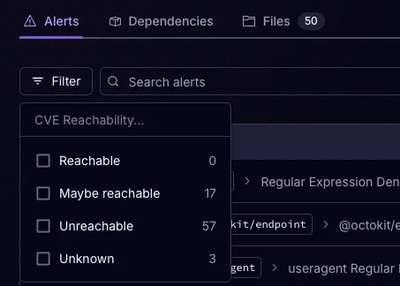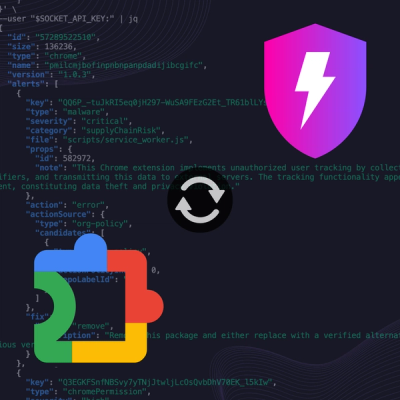
Product
Introducing Rust Support in Socket
Socket now supports Rust and Cargo, offering package search for all users and experimental SBOM generation for enterprise projects.
.. image:: https://secure.travis-ci.org/django-ldapdb/django-ldapdb.png?branch=master :target: http://travis-ci.org/django-ldapdb/django-ldapdb/
.. image:: https://img.shields.io/pypi/v/django-ldapdb.svg :target: https://pypi.python.org/pypi/django-ldapdb/ :alt: Latest Version
.. image:: https://img.shields.io/pypi/pyversions/django-ldapdb.svg :target: https://pypi.python.org/pypi/django-ldapdb/ :alt: Supported Python versions
.. image:: https://img.shields.io/pypi/wheel/django-ldapdb.svg :target: https://pypi.python.org/pypi/django-ldapdb/ :alt: Wheel status
.. image:: https://img.shields.io/pypi/l/django-ldapdb.svg :target: https://pypi.python.org/pypi/django-ldapdb/ :alt: License
django-ldapdb is an LDAP database backend for Django, allowing to manipulate
LDAP entries through Django models.
It supports most of the same APIs as a Django model:
MyModel.objects.create()MyModel.objects.filter(x=1, y__contains=2)django-ldapdb supports every upstream-supported Django version, based on
the Django support policy <https://www.djangoproject.com/download/#supported-versions>_.
For the current version, the following versions are supported:
Linux
Use pip: ``pip install django-ldapdb``
You might also need the usual ``LDAP`` packages from your distribution, usually named ``openldap`` or ``ldap-utils``.
Windows
django-ldapdb depends on the python-ldap <https://pypi.python.org/pypi/python-ldap> project.
Either follow its Windows installation guide <https://www.python-ldap.org/en/latest/installing.html>_,
or install a pre-built version from https://www.lfd.uci.edu/~gohlke/pythonlibs/#python-ldap
(choose the .whl file matching your Python/Windows combination, and install it with pip install python-ldap-3...whl).
You may then install django-ldapdb with
pip install django-ldapdb
Add the following to your settings.py:
.. code-block:: python
DATABASES = {
'ldap': {
'ENGINE': 'ldapdb.backends.ldap',
'NAME': 'ldap://ldap.nodomain.org/',
'USER': 'cn=admin,dc=nodomain,dc=org',
'PASSWORD': 'some_secret_password',
},
'default': {
'ENGINE': 'django.db.backends.sqlite3',
'NAME': os.path.join(BASE_DIR, 'db.sqlite3'),
},
}
DATABASE_ROUTERS = ['ldapdb.router.Router']
If you want to access posixGroup entries in your application, you can add
something like this to your models.py:
.. code-block:: python
from ldapdb.models.fields import CharField, IntegerField, ListField
import ldapdb.models
class LdapGroup(ldapdb.models.Model):
"""
Class for representing an LDAP group entry.
"""
# LDAP meta-data
base_dn = "ou=groups,dc=nodomain,dc=org"
object_classes = ['posixGroup']
# posixGroup attributes
gid = IntegerField(db_column='gidNumber', unique=True)
name = CharField(db_column='cn', max_length=200, primary_key=True)
members = ListField(db_column='memberUid')
def __str__(self):
return self.name
def __unicode__(self):
return self.name
and add this to your admin.py:
.. code-block:: python
from django.contrib import admin
from . import models
class LDAPGroupAdmin(admin.ModelAdmin):
exclude = ['dn', 'objectClass']
list_display = ['gid', 'name']
admin.site.register(models.LDAPGroup, LDAPGroupAdmin)
Important note: You must declare an attribute to be used as the primary key. This attribute will play a special role, as it will be used to build the Relative Distinguished Name of the entry.
For instance in the example above, a group whose cn is ``foo``
will have the DN ``cn=foo,ou=groups,dc=nodomain,dc=org``.
djanglo-ldapdb provides the following fields, all imported from ldapdb.models.fields:
Similar to Django:
* ``IntegerField``
* ``FloatField``
* ``BooleanField``
* ``CharField``
* ``ImageField``
* ``DateTimeField``
Specific to a LDAP server:
* ListField (holds a list of text values)
* TimestampField (Stores a datetime as a posix timestamp, typically for posixAccount)
Legacy:
* DateField (Stores a date in an arbitrary format. A LDAP server has no notion of Date).
It is possible to adjust django-ldapdb's behavior by defining a few parameters in the DATABASE section:
PAGE_SIZE (default: 1000)
Define the maximum size of a results page to be returned by the server
QUERY_TIMEOUT (default: no limit)
Define the maximum time in seconds we'll wait to get a reply from the server (on a per-query basis).
.. note:: This setting applies on individual requests; if a high-level operation requires many
queries (for instance a paginated search yielding thousands of entries),
the timeout will be used on each individual request;
the overall processing time might be much higher.
When developing against a LDAP server, having access to a development LDAP server often proves useful.
django-ldapdb uses the volatildap project <https://pypi.org/project/volatildap>_ for this purpose:
Applications using django-ldapdb may use the following code snippet when setting up their tests:
.. code-block:: python
# This snippet is released in the Public Domain
from django.conf import settings
from django.test import TestCase
import volatildap
class LdapEnabledTestCase(TestCase):
@classmethod
def setUpClass(cls):
super().setUpClass()
cls.ldap = volatildap.LdapServer(
# Load some initial data
initial={'ou=people': {
'ou': ['people'],
'objectClass': ['organizationalUnit'],
}},
# Enable more LDAP schemas
schemas=['core.schema', 'cosine.schema', 'inetorgperson.schema', 'nis.schema'],
)
# The volatildap server uses specific defaults, and listens on an arbitrary port.
# Copy the server-side values to Django settings
settings.DATABASES['ldap']['USER'] = cls.ldap.rootdn
settings.DATABASES['ldap']['PASSWORD'] = cls.ldap.rootpw
settings.DATABASES['ldap']['NAME'] = cls.ldap.uri
def setUp(self):
super().setUp()
# Starting an already-started volatildap server performs a data reset
self.ldap.start()
@classmethod
def tearDownClass(cls):
# Free up resources on teardown.
cls.ldap.stop()
super().tearDownClass()
FAQs
A fork from django-ldapdb
We found that suap-django-ldapdb demonstrated a healthy version release cadence and project activity because the last version was released less than a year ago. It has 2 open source maintainers collaborating on the project.
Did you know?

Socket for GitHub automatically highlights issues in each pull request and monitors the health of all your open source dependencies. Discover the contents of your packages and block harmful activity before you install or update your dependencies.

Product
Socket now supports Rust and Cargo, offering package search for all users and experimental SBOM generation for enterprise projects.

Product
Socket’s precomputed reachability slashes false positives by flagging up to 80% of vulnerabilities as irrelevant, with no setup and instant results.

Product
Socket is launching experimental protection for Chrome extensions, scanning for malware and risky permissions to prevent silent supply chain attacks.